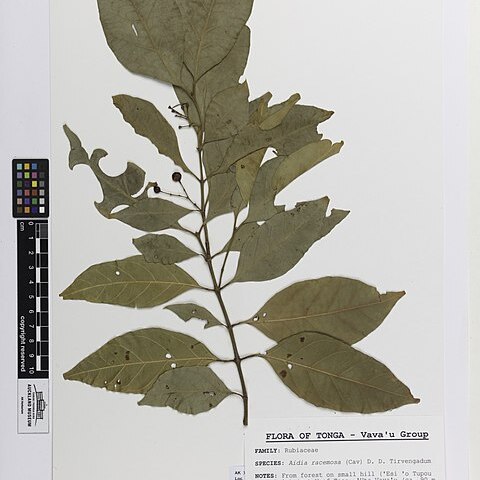Trees to 25 m tall; branches somewhat flattened becoming subterete, glabrous. Petiole 5-6 mm, glabrous; leaf blade drying thinly leathery, lanceolate to elliptic-oblong, 7-12 × 2-4 cm, glabrous on both surfaces, base acute to cuneate, apex acute; secondary veins 4 or 5 pairs, in abaxial axils usually with foveolate and/or pilosulous domatia; stipules caducous, shortly united around stem, narrowly triangular, 3-5 mm, glabrous, apex acuminate. Inflorescences cymose, ca. 3 × 4-6 cm, glabrescent, with axes becoming monochasial distally; peduncle ca. 0.5 cm; bracts triangular, 1-1.5 mm, acute; pedicels 1-3 mm. Calyx glabrous; ovary portion ellipsoid, ca. 1 mm; limb ca. 1.5 mm, shortly dentate to denticulate; teeth 5. Corolla white, outside glabrous; tube ca. 4 mm; lobes 5, narrowly spatulate-oblong, 5-5.5 mm, adaxially strigillose, obtuse to rounded. Berry 4-8 mm in diam., glabrous.
More
A shrub or tree. It grows up to 15 m tall. The bark is light grey. The leafy twigs are smooth. The leaves are oval and 9-17 cm long by 3-5.5 cm wide. They are thin and leathery. They have 5-8 pairs of secondary veins. The base of the leaf is rounded and the tip is pointed. The leaf stalk is 1-2 cm long. The flower stalk is branched and has up to 50 flowers. The flowers are white. They have a jasmine scent. The fruit is a berry which is red when ripe. It is 5-15 mm long by 4-10 mm across. Fruit are in clusters in the axils of leaves. There are several tiny seeds.


